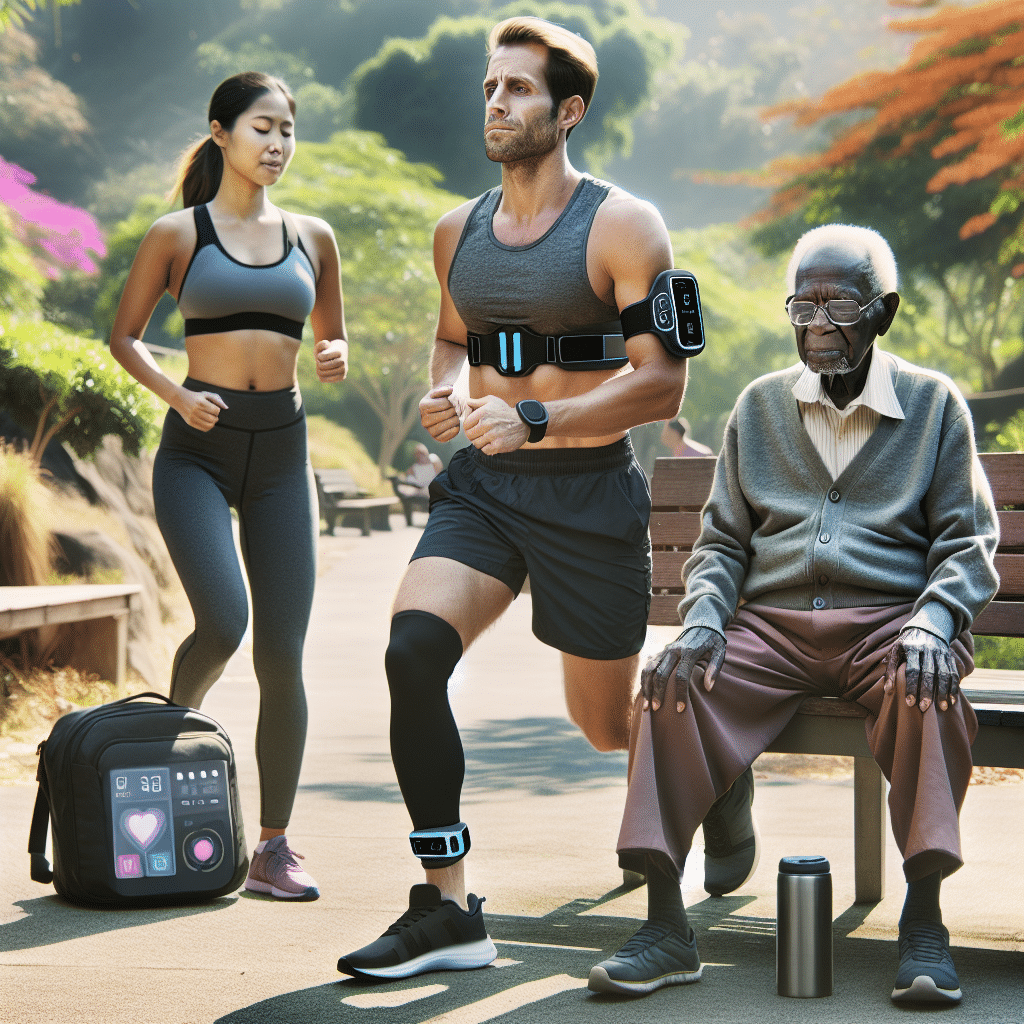Understanding Posture-Correcting Wearables
Posture-correcting wearables are innovative devices designed to help users maintain an optimal posture during daily activities. Ranging from smart shirts and bras to wearable sensors and straps, these devices leverage advanced technology to provide real-time feedback for users struggling with poor posture. When combined with a fitness routine, these wearables can optimize physical performance, enhance workout efficiency, and reduce injury risks.
The Importance of Good Posture in Fitness
Good posture is essential for optimal movement, balance, and functionality. Misalignments can lead to muscle strain, decreased strength, and heightened injury risk. For fitness enthusiasts, maintaining proper posture during exercises ensures that the right muscles are engaged while performing workouts. Poor posture can lead to ineffective routines, potential injuries, and long-term skeletal issues.
How Wearables Work
Posture-correcting wearables typically utilize sensors and algorithms to monitor body alignment. These devices gather data on the user’s posture by detecting angles and movements. Users receive feedback via smartphones or built-in alerts, prompting them to correct their postures in real-time. Many wearables also come with applications that analyze posture over time, providing users with insights and trends.
Enhancing Workout Effectiveness
-
Real-Time Feedback: One of the most significant advantages of posture-correcting wearables is their ability to provide instantaneous feedback. Users can immediately adjust their stance and alignment during workouts. This instant correction allows individuals to ensure they’re utilizing proper form, enhancing the effectiveness of exercises like squats and deadlifts.
-
Injury Prevention: An incorrect form can lead to injuries such as strains and sprains. By training users to maintain proper alignment, wearables minimize injury risk. This proactive approach is especially critical for beginners who may not yet have a strong understanding of body mechanics.
-
Muscle Engagement Awareness: Posture-correcting devices help increase awareness of which muscle groups are activated during workouts. Enhanced awareness leads to better muscle engagement and improved strength-building, as users begin to rely on the correct muscles rather than compensating with poor posture.
Integrating Wearables into Your Routine
-
Start with Assessments: Many posture-correcting wearables come with initial assessment tests. These usually measure your baseline posture and highlight specific areas needing improvement. Conduct these assessments before starting any new fitness routine to personalize your approach.
-
Daily Wear: For optimal results, wear your posture-correcting device throughout the day, not just during workouts. This integration into daily life promotes consistent posture awareness, reinforcing good habits that carry over to exercise.
-
Customized Training Plans: Several wearables offer personalized training plans based on your posture analysis. Utilize these plans alongside regular workouts to incorporate specific exercises targeting muscle imbalances or weaknesses uncovered during assessments.
Enhancing Mind-Body Connection
-
Increased Focus: Posture-correcting wearables foster a strong mind-body connection, especially during exercises that require concentration, like yoga or pilates. Users who focus on their posture are likely to engage in deeper breathing and mindfulness techniques, enhancing the overall workout experience.
-
Confidence Boost: Good posture can improve self-confidence. When users develop a better understanding of their body mechanics, they often feel more assured in their movements, which translates to higher performance and more ambitious fitness goals.
Long-Term Benefits
-
Chronic Pain Management: Many individuals suffer from chronic back pain due to poor posture. By utilizing posture-correcting wearables, users can gradually retrain their bodies, moving towards improved posture. With time and consistent effort, many find significant relief from discomfort.
-
Enhanced Athletic Performance: For serious athletes, every aspect of physical condition matters. Proper posture ensures that athletes achieve maximal power and efficiency, translating into better performance in competitions. Wearables help refine technique, ultimately enhancing speed, agility, and strength over time.
-
Better Recovery: Good posture facilitates effective recovery. After intense workouts, maintaining appropriate alignment can prevent muscle tension and accelerate recovery. Wearables can remind users to stretch or adjust their positions, promoting optimal recovery strategies.
Key Features to Look for in Wearables
-
Comfort and Fit: Choose wearables designed for comfort. A well-fitted device will encourage continual use. Materials should be breathable and suitable for various activities to ensure usability throughout your everyday tasks.
-
User-Friendly Interface: Opt for devices with intuitive applications that provide easy access to metrics, progress, and tailored recommendations. A straightforward interface makes tracking improvements less daunting and more engaging.
-
Battery Life and Durability: Select wearables with long battery life and durable builds, particularly if you plan on using them during rigorous activities. This ensures the device remains functional through your entire fitness regimen.
Conclusion
Posture-correcting wearables offer a dynamic solution for enhancing fitness routines by promoting proper body alignment, improving exercise effectiveness, and reducing injury risk. By integrating these advanced technologies into daily training, fitness enthusiasts can cultivate awareness, boost performance, and achieve long-term body health.
